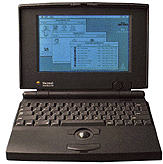HOME
|
|
|
||
 |
Two friends, Wozniac and Jobs, got together in 1976 to make a computer. They decided to set up a company, and to call it Apple. |
||
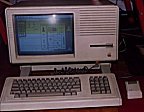 |
At first, the computer was only a tool for mathematicians and scientists. Nobody thought ordinary people would find them useful, and hardly anyone had a computer in their home. Apple introduced the graphical user interface (where it has icons, like the picture of the trash can, and folders, and a desktop) with their Lisa computer. Before this, people had to interact with the computer in code. |
||
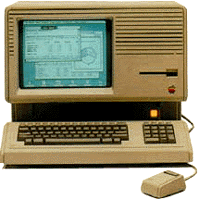 |
Now that it was easier to use, more people got into using a computer. To start with, it didn't have a hard drive, so you had to keep programmes on storage media and load them each time you used the computer. At first ordinary cassette tapes were used, and then floppy disks. These disks were very big, and .... floppy! Apple were the first to use a mouse, so that you could click and point at things on the screen, instead of using the keyboard all the time. |
||
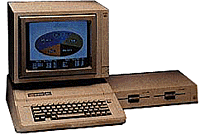 |
This is an Apple IIe - we used to have them at Puhinui School. They first came out in about 1983, and we used them until the mid 90's. They didn't break down, it was just that we no longer wanted to use the programmes on them. They were very reliable computers! |
||
|
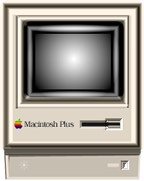 |
After that, Apple developed a new model called the Macintosh. That's what we call Apple computers today - a Mac. |
||
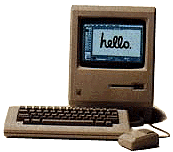 |
In those days, a computer that
had 128k of memory was pretty powerful! (Today, the
computers you use in the Learning Centre have at
least 32MB of RAM). Having more memory means you
can run more powerful programmes, and run them
faster. |
||
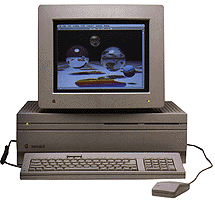 |
Computers in the late 1980's were still pretty big and clunky, but starting to be more like the ones we use today. They were quite expensive to buy, and cost about as much as the far more powerful ones you buy today. |
||
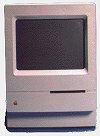 |
The Mac Classic was a very small computer - easy to pick up and carry around. We have still got one working in the school. If you go down to Room 20 in the Juniors, you can see what a classic looks like. For the first time, it had the monitor and the CPU (central processing unit) in the one case. We used to have two of them sitting in the old library (when the library was in Room 9) for children to use. |
||
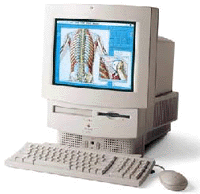 |
In 1996, Puhinui School bought a lot of Performa 580's, and we set up a Learning Centre down in Room 7. They were the latest thing, and we were very proud of them! All the children in the senior and middle school came to the Learning Centre for lessons with Miss Currie, to learn how to use the computers. The teachers came to learn too. Everyone had their own floppy disk (these were by now much smaller than the original floppy disks, and not floppy at all!) Floppy disks only held 1.2MB, so some children had to buy more than one to keep all their work. |
||
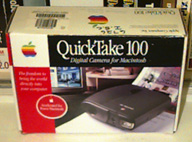 |
We bought a QuickTake camera, so that children and teachers could use it to take digital photos and put in their work on computer. This camera kept going for years, being used each year by the Puhinui Flash reporters to produce their newspaper. But finally, in 2001, it died, and we bought a new digital camera - a Kodak this time. (And being 6 years more advanced in technology, it is smaller, easier to use, and gives much better quality photos). |
||
|
|
We also had a few powerbooks (laptop computers) that teachers could use to take work home. You had to have your work on a floppy disk if you wanted to transfer it to a computer at school or print it out. Children mostly didn't use these laptops, because they were very expensive. |
||
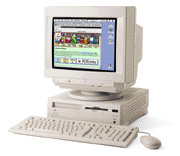 |
Halfway through 1997, our new library and Learning Centre was built. We now had cables in the wall, and a network. That meant we had a big powerful computer, called a server, and the other computers could save work on it, or copy things from it. We also bought 6360's, which are still working in middle and senior school classrooms, along with the 580's. |
||
 |
In 1998, Apple introduced the iMac, which was very exciting, because no computer had ever looked like that before. It didn't have a floppy disk drive at all, just a CD drive for CD Roms. At Puhinui, we didn't buy any iMacs until 1999, and the children were very impressed with how fast they were, and how cool they looked. |
||
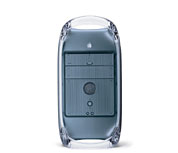 |
Then in 2000, we bought a new server. All the children were saving their work on our server, and the old one was too small! We also had the intranet on the server, so it needed to be fast. This kind of computer is called a tower, because it stands up tall, rather than being flat so you can put a monitor on top of it. |
||
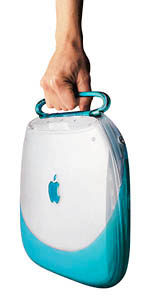 |
One of the most exciting things Apple produced was the iBook. It had some things that laptop computers had never had before - colour, curved edges, and a handle to carry it by. This meant that you didn't have to have a case to carry your laptop round in. Inside it has a trackpad, rather than a trackball like the very first Apple powerbooks. Also, it has a colour screen, where the old laptops were black and white. At Puhinui School, we first bought 2 iBooks for teachers and children to use. Then in 2001 we bought six more, and put them together and called them the iPod. They can be taken to any classroom in the school and used with the airport hub. Their battery life is much longer than the first laptops, so you can use them all day before plugging them into the mains and recharging them. |
||
 |
The airport hub is a way of networking without wires - called wireless networking. You plug the airport into the network using an ethernet cable, and then the iBooks which have an airport card inside them can contact the network using radio waves. It means you can use the iBooks without any cords or cables! |
||
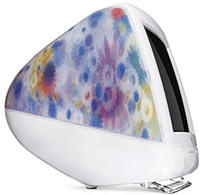 |
So, what is new in 2001? This year Apple have produced new colours of iMacs, including this one, called FlowerPower. Do you like it? Computers are getting smaller, and faster, and more powerful all the time. Mostly the hard drives are measured in gigabytes, not megabytes - certainly not in kilobytes as they were in the earliest days! There are no floppy drives, and the CD drive is now designed to take DVDs as well. |
||
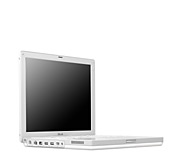 |
And this is what the 2001 iBook looks like. No more handle, no more curved lines, and all white. It is much smaller and lighter than the old iBooks. So if we buy any more iBooks next year, this is what they will look like. Do you like this one, or do you prefer the old version? |
||
|
|
What will Apple computers look like in 2002? Who knows! |
Back to Top
